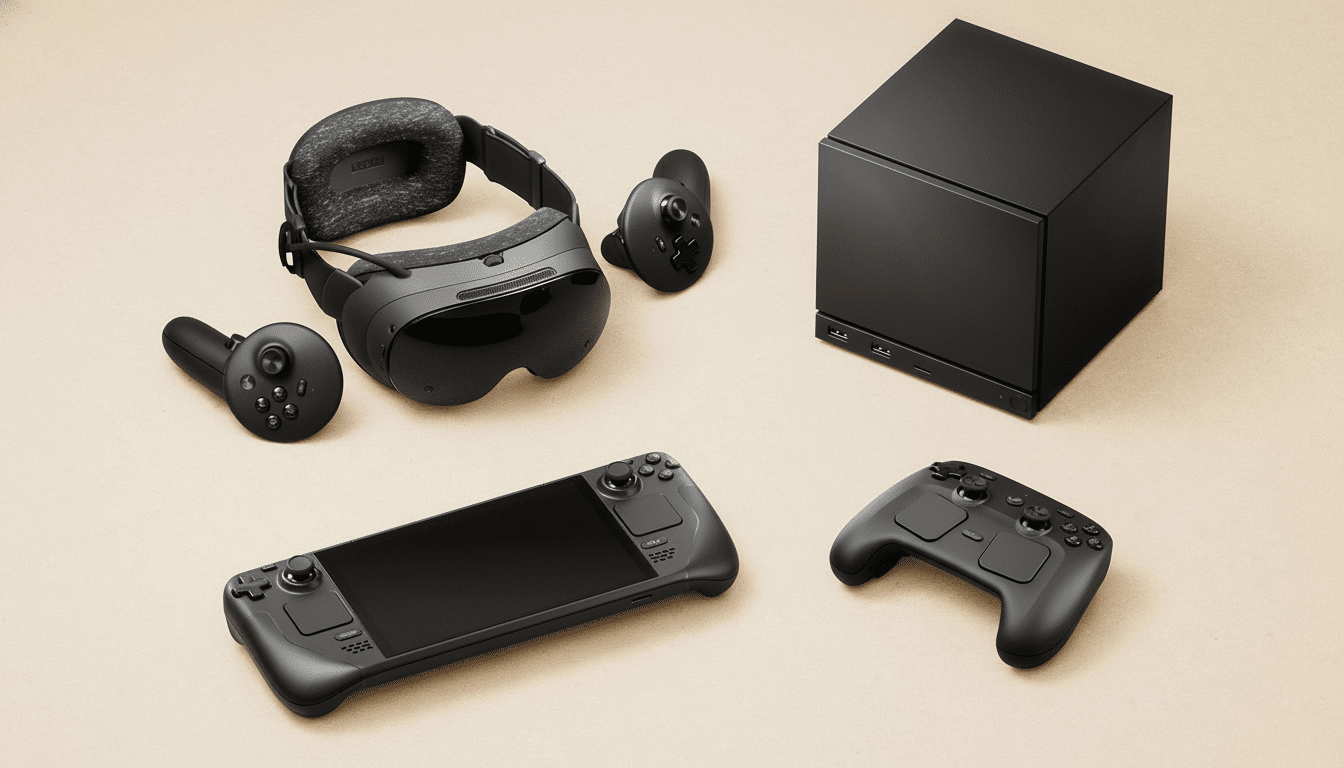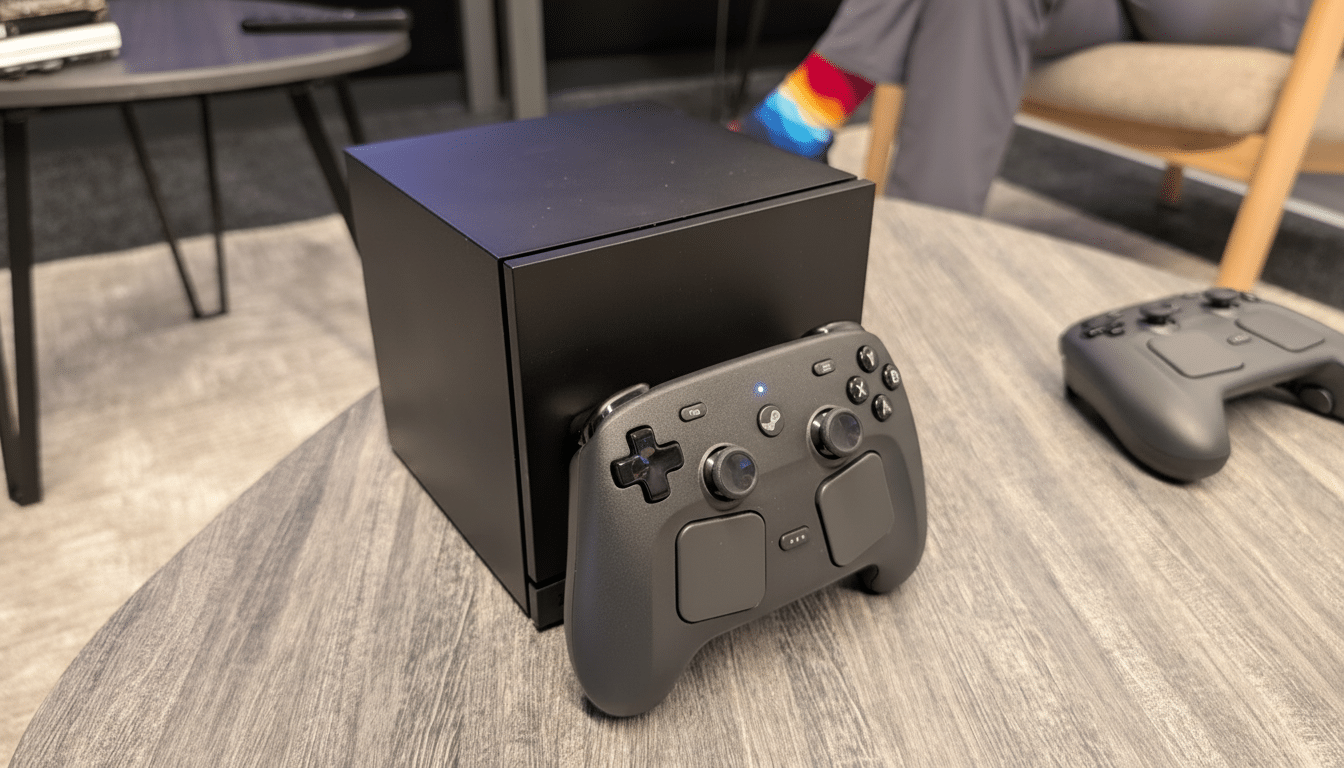Valve has revealed its long-rumored living room console: the Steam Machine, a TV-based device that runs SteamOS and plays your existing library of Steam games.
Designed as a couch-friendly little brother to the Steam Deck, the device is aimed at sharp 4K visuals at 60 frames per second and taps AMD silicon for big-time performance gains. Price and release timing details have not yet been announced; however, the company’s remarks to business partners — available now via a public URL — make clear the specs and early positioning will mean a brisk return to the console space.

What Valve Announced About the New Steam Machine
The Steam Machine is basically a console-caliber PC built around Valve’s SteamOS and Deck-style interface, which replaced Big Picture Mode.
It boots directly into a game-focused UI, works with the same Proton compatibility layer that powers Windows games on Linux, and is designed to live under your TV — not in your hands. In spirit, it’s a resuscitation of Valve’s old “Steam Machine” concept from the mid-2010s, but one coming after years of work: the Steam Deck putting actual hardware sales on Valve’s books; a more mature Proton stack; and a whole lot more “Verified” and “Playable” games than previously.
That ecosystem context matters. SteamDB isn’t an infallible source for peak concurrent user records in the tens of millions, and Valve’s just-announced Verified program has already turned thousands of titles into plug-and-play SteamOS games. In short, the software lift is lighter this time — and the hardware vastly stronger.
Detailed Specs and Performance Targets for Steam Machine
Valve claims that the box is six times more powerful than the Steam Deck. Beneath the chassis is a semi-custom AMD Zen 4 CPU clocked at 3.5GHz and boasting 6 cores and 12 threads, alongside a semi-custom RDNA 3 GPU with 28 compute units that can sustainably hit up to 2.45GHz. The machine has 16GB of DDR5 for the system and another 8GB of GDDR6 in VRAM, a mirror to how (most) modern consoles divide memory needs between graphics and general compute.
Storage will also sport two SSD configurations at launch — 512GB and 2TB — to offer customers an entry option as well as ensure they have some future-proofing available. Connectivity is simple: two USB-A ports up front for fast plug-ins, another two, plus a USB-C, in the back for more permanent accessories and faster devices. A 110W TDP is its listed power number, so this gives us a bit of an indication that we’re not looking at something handheld and passive here.
Valve is aiming out of the gate for many games to run in 4K at 60fps, something that RDNA 3 hardware has definitely gotten better at with modern upscalers. Raw teraflop math doesn’t tell you the full story, but previous analysis by Digital Foundry has shown RDNA 3 efficiency gains over RDNA 2 in the same ballpark of power. Alongside SteamOS fine-tuning and technologies including the Vulkan APIs and AMD’s FidelityFX Super Resolution, a 4K living room experience appears to be an achievable addition to whatever portion of the catalog can handle it.

Price and Release Timing Details Still Unclear
Valve hasn’t revealed a price or even a release date.
The company has also failed to specify a controller, bundled accessories, or regional launch strategy. Valve has historically had an eye for aggressive price-to-performance on hardware, but without Valve talking dollars and timing, any guess would be just that. Look for clarity when certifications and retail listings start popping up, along with developer documentation — those are the usual tells as hardware prepares to launch.
Positioning Against PlayStation and Xbox Consoles
Power-wise, the Steam Machine seems to arrive at the same neck of the woods as current-gen consoles that came out years ago. Its main differentiator isn’t silicon — it’s the library and the openness. You’re getting tens of thousands of PC games (including the hits from indie studios that rarely go on sale on consoles), along with mod support, mouse-and-keyboard compatibility if you want it, and so much more. That flexibility could be an attractive option for PC gamers in need of a second, console-like endpoint that doesn’t require keeping a full-size tower in the living room.
For platform competitors, the risk is less about specs than momentum. The Steam Deck has made Linux-based gaming socially acceptable on consumer hardware, and Proton’s ongoing evolution — thanks to a combination of Valve and third parties such as CodeWeavers — continues to lower friction for developers and players. If the Steam Machine can provide silent acoustics, reliable 4K output, and effortless couch control schemes — it’s a low-friction avenue to making a Steam library into something friendly for your TV.
What to Watch Next for Valve’s Steam Machine
Key open questions remain. If it sells well, will they bring out a new first-party controller? Or does Valve fall back on existing pads that naturally work really well with Steam Input? What is the scalability of storage beyond just internal SSD options? Will the box have features like HDR, VRR, and quick-resume-style session management enabled out of the gate? And how will the Verified program expand to offer 4K-friendly settings profiles specific to this kit?
Even with all those unknowns, the pitch is obvious: a console-class PC that understands SteamOS, targets 4K60, and gets you access to a huge library with basically zero setup. If Valve can stick the landing on both price and ubiquity, the Steam Machine could present itself as the new default choice for PC gaming in the living room.

